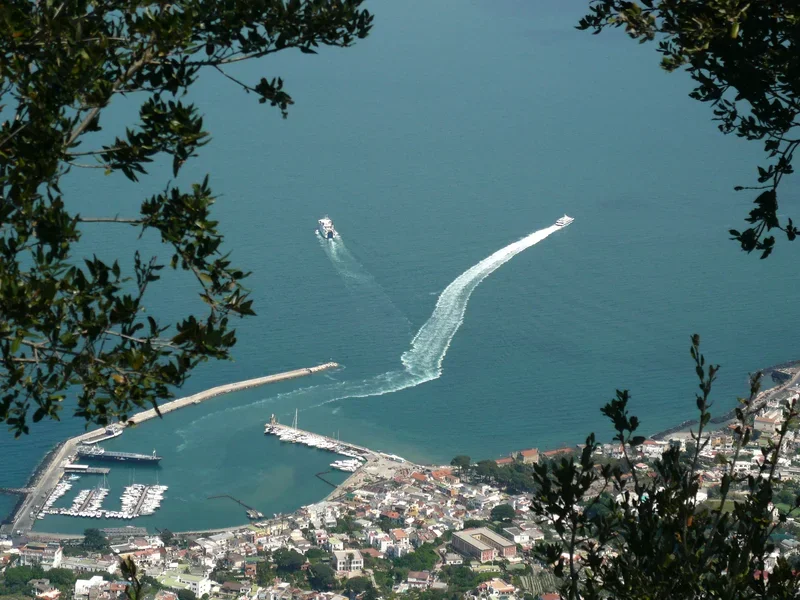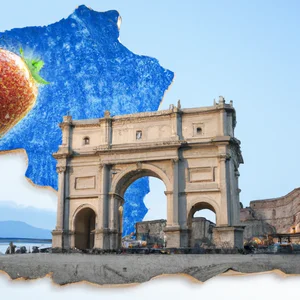Book your experience
Vesuvius National Park
The Vesuvius National Park represents one of the most fascinating natural and cultural treasures of Campania, attracting thousands of visitors every year eager to explore its unique heritage. Located a few kilometers from Naples, the park is not only a place of extraordinary natural beauty, but also an important site of scientific and historical interest, being closely linked to the history of the eruption of Vesuvius which in 79 AD. buried the cities of Pompeii and Herculaneum. This article aims to accompany the reader on a journey through ten fundamental points that highlight the wonders of this park.We will start with the history of the Vesuvius National Park, a fascinating tale that intertwines natural and human events, and then explore the rich flora and fauna that populate this protected area. The paths and trekking routes offer a unique way to immerse yourself in nature, while the panoramic views of the Gulf of Naples take your breath away and provide unforgettable moments. There will be no shortage of opportunities to discover the different outdoor activities available, such as hiking and cycling, which make the park an ideal place for adventure lovers.A particular focus will be dedicated to the Vesuvius volcano, exploring its historical eruptions and the fascinating geology that characterizes it. Furthermore, we cannot forget the archaeological sites in the surrounding area, which tell stories of past civilizations. Finally, we will provide practical information for visitors and suggestions on how to reach this enchanting park, so that every explorer can fully enjoy the wonders that Vesuvius National Park has to offer. Get ready to discover a corner of the world where nature and history come together in an extraordinary experience.
History of the Vesuvius National Park
The Vesuvius National Park was established in 1995 with the aim of protecting and enhancing the natural and cultural heritage of the Vesuvius area, an active volcano located near Naples. The history of this area is intrinsically linked to the eruptions of Vesuvius, which had a significant impact on the lives of the surrounding populations.
Eruptions and the Impact on History
The history of Vesuvius is marked by several catastrophic eruptions, the most famous of which is that of 79 AD, which buried the Roman cities of Pompei and Herculaneum. This catastrophic event took on extraordinary historical and archaeological importance, allowing the preservation of a part of the daily life of the Roman era.
Over the centuries, Vesuvius has continued to erupt, with significant events occurring in 1906, 1929, and 1944 . These eruptions had devastating consequences on the local population, but also led to greater awareness of the need to monitor and study the volcano.
The Creation of the Park
With the creation of the Vesuvius National Park, it was possible to implement conservation strategies to protect not only the volcano itself, but also the numerous ecosystems and biodiversity present in the area. The park extends for approximately 8,482 hectares and includes various municipalities, including Somma Vesuviana, Torre del Greco, and Ottaviano strong>.
Today, the Vesuvius National Park is an important point of reference for naturalistic and cultural tourism, attracting visitors from all over the world eager to explore the natural and historical wonders of this unique area.
Flora and fauna of the Vesuvius National Park
The Vesuvius National Park is an area of extraordinary natural beauty and biodiversity. The flora and fauna that populate the park are influenced by its particular geology and the microclimate created by the presence of the volcano.
Flora
The park is home to a wide range of plant species, many of which are endemic to the region. The vegetation is characterized by:
- Chestnut forests: These forests cover a large part of the territory and are characterized by centuries-old trees that offer an ideal habitat for various species of birds and mammals.
- Mediterranean scrub: This vegetation is typical of coastal and hilly areas, with plants such as rosemary, lavender and oleander, which flower during spring and summer.
- Rocky plants: In the drier and rockier areas of the volcano, you can find resistant plants such as thyme and echinops, which have adapted to the difficult living conditions.
Fauna
The fauna of the park is equally rich and varied, including numerous species of mammals, birds, reptiles and insects. Some of the most common animals include:
- Foxes: These mammals are frequently spotted in the park, especially in wooded areas.
- Hawks: Several species of hawks nest in the area, making it a paradise for birdwatchers.
- Snakes: In the hottest and driest areas of the park, you can encounter different species of snakes, some of which are poisonous.
- Insects: The biodiversity of the park is enriched by a vast number of insects, including butterflies and bees, essential for the pollination of plants.
The Vesuvius National Park represents a unique ecosystem, where flora and fauna coexist in harmony, offering visitors the opportunity to explore and appreciate the beauty of nature in an extraordinary volcanic context.
Trails and trekking routes
The Vesuvius National Park offers a network of trails and trekking routes that allow you to explore the natural beauty and geological richness of the area. The routes vary in difficulty and length, making them accessible to hikers of all levels.
Crater Path
One of the most famous routes is the Sentiero del Cratere, which takes visitors to the edge of the crater of Vesuvius. This trail, approximately 1.2 km long, offers a unique experience with the possibility of observing the mouth of the volcano up close and enjoying breathtaking views of the Gulf of Naples. The climb is moderate and the route is well signposted.
Path of the Gods
Another notable route is the Path of the Gods, which winds through the lush vegetation of the park, offering spectacular views of the coast and surrounding islands. This trail is longer (about 7 km) and has more challenging sections, but is perfect for those looking for an adventure immersed in nature.
Circular routes
For more experienced trekking lovers, the park also has ring routes that allow you to explore different areas of the park in a single excursion. These itineraries can vary from 10 to 20 km and offer the opportunity to discover lesser-known corners and extraordinary panoramas.
Useful information
Trails are generally open year-round, but it’s best to visit the park during spring and fall to avoid the summer heat. It is important to bring with you appropriate clothing, trekking shoes and water, as the services inside the park are limited.
Furthermore, it is possible to take part in guided excursions organized by park experts, who provide detailed information on the flora, fauna and geology of Vesuvius, making the experience even more enriching.
Panoramic views of the Gulf of Naples
The Vesuvius National Park offers some of the most spectacular panoramic views of the Gulf of Naples. From the top of the volcano and from various observation points within the park, visitors can enjoy a breathtaking landscape that embraces the sea, the surrounding hills and the city of Naples itself.
Panoramas from the Crater of Vesuvius
One of the most unmissable experiences is the visit to the crater of Vesuvius. From its top, you can admire a 360-degree view that extends to the horizon, including the entire Gulf of Naples, the island of Capri and on particularly clear days, even the coasts of Campania. The lights of the sunset make this panorama even more enchanting.
Viewpoints and Observation Points
In addition to the crater, there are several viewpoints and observation points scattered along the paths of the park. Places such as the Belvedere di Ottaviano and the Belvedere di San Sebastiano offer different and equally fascinating angles on the surrounding landscape, allowing visitors to take unforgettable photographs.
The Gulf of Naples and the Islands
The gulf is characterized by the presence of historical islands such as Ischia and Procida, easily visible from the panoramic points of the park. The turquoise waters of the sea, combined with the rich vegetation and coastal cities, create a natural picture of rare beauty.
Advice for visitors
To fully enjoy the panoramic views, it is advisable to visit the park during the early morning or late afternoon hours, when the light is softer and offers ideal conditions for photography. Furthermore, bringing binoculars with you can enrich the experience, allowing you to observe the details of the surrounding locations.
Outdoor activities: hiking and cycling
Vesuvius National Park offers a wide range of outdoor activities that allow visitors to explore the natural beauty of the area. Hiking and cycling are among the most popular activities, thanks to the many trails and routes that wind through the park.
Excursions
Excursions are an ideal way to discover the breathtaking landscape of Vesuvius. The trails are suitable for different levels of difficulty, from the simplest routes for families to the most challenging ones for expert hikers. The best-known routes include:
- Sentiero del Gran Cono: A path that leads to the top of the volcano, offering a spectacular view of the crater and the Gulf of Naples.
- Pine Path: An itinerary that passes through pine forests and offers panoramic views of the sea.
Cycling
For bicycle lovers, the Vesuvius National Park offers cycle paths that wind through vineyards and olive groves, making the experience even more fascinating. It is possible to rent bicycles at some access points in the park, and there are also guided bicycle tours that allow you to discover the local flora and fauna while cycling.
Advice for visitors
It is advisable to wear comfortable shoes and bring water and snacks when hiking. Additionally, checking the weather before you set off is crucial, as conditions can change quickly in the mountains. Don’t forget to respect nature and follow the marked paths to ensure your safety and that of the environment.
Vesuvius volcano: eruptions and geology
Vesuvius is one of the most famous and studied volcanoes in the world, known for its eruptive history which has had a significant impact on the surrounding region, in particular on the cities of Pompei strong> and Herculaneum.
History of the eruptions
Vesuvius has recorded numerous eruptions over the centuries. The most famous is that of 79 AD, when a massive eruption buried the cities of Pompeii and Herculaneum under a layer of ash and lapilli. This eruption was described by the Roman historian Pliny the Younger, who provided a detailed account of the events and the impact on the surrounding area.
Subsequently, Vesuvius continued to erupt, with significant events recorded in the 17th century, the 18th century and the 20th century >. The last significant eruption occurred in 1944.
Geology of Vesuvius
Vesuvius is classified as a stratified volcano, characterized by alternating layers of lava and pyroclastic materials. This type of volcano is known for its explosive eruptions, which can be very destructive. Its conical shape is the result of centuries of eruptions that have accumulated layers of solidified lava.
The volcano is located within the Vesuvius National Park, a protected area that preserves not only the volcano itself, but also the unique flora and fauna that thrive on its slopes. The geology of Vesuvius is studied by geologists and volcanologists from around the world, who seek to better understand the behavior of this volcano and the risks associated with its potential future eruptions.
Volcanic risks
Given its eruptive history, Vesuvius is considered one of the most dangerous volcanoes in the world. Local authorities and researchers are constantly monitoring volcanic activity and have developed evacuation plans for populations living in the surrounding areas.
Vesuvius represents not only an important tourist attraction, but also a fundamental object of study to understand volcanic phenomena and their effects on the environment and surrounding communities.
Archaeological sites in the surrounding area
Archaeological sites in the surrounding area
The Vesuvius National Park is surrounded by an archaeological heritage of extraordinary importance, which attracts visitors from all over the world every year. The most significant archaeological sites in the surrounding area include:
Pompeii
Pompei is one of the most famous archaeological sites in the world, dating back to 79 AD, when the city was buried by the eruption of Vesuvius. Excavations have revealed an incredibly well-preserved city, with buildings, frescoes and mosaics offering a window into the daily life of the ancient Romans. Pompeii is declared a World Heritage Site by UNESCO and represents one of the main attractions for visitors to the park.
Herculaneum
Herculaneum is another archaeological site of great importance, also buried by the eruption of Vesuvius. Unlike Pompeii, Herculaneum was preserved even more intact thanks to the rapid covering of ash, which protected many of its buildings. The city offers frescoes and structures that show the life of a wealthy Roman community.
Oplontis
The archaeological site of Oplontis is less well known but equally fascinating. Here you can visit the ruins of a patrician villa, known as Villa di Poppea, which is believed to have belonged to the wife of Emperor Nero. The excavations have brought to light wonderful frescoes and mosaics, making it an unmissable place for history buffs.
Stabiae
Finally, the site of Stabiae is another example of an aristocratic Roman villa, located on a hill overlooking the Gulf of Naples. The excavations have revealed splendid frescoes and a breathtaking panoramic view, which makes the place even more evocative.
The presence of these archaeological sites makes the Vesuvius National Park not only a place of natural beauty, but also a fundamental cultural and historical reference point. Visitors can easily combine excursions in the park with visits to these extraordinary excavations, for a complete experience that combines nature and history.
Events and displays in the Vesuvius National Park
The Vesuvius National Park is not only a natural wonder, but also an important venue for events and demonstrations that celebrate the culture, history and biodiversity of the area. Throughout the year, the park hosts various initiatives involving residents and visitors.
Festivals and festivals
Numerous festivals and festivals take place in the park and in the surrounding municipalities, dedicated to local gastronomy, art and tradition. Among these, we highlight:
- Grape Harvest Festival: This event celebrates the grape harvest in the vineyards located on the slopes of Vesuvius, offering tastings of local wines and typical dishes.
- Chestnut Festival: It is held in autumn and offers chestnut-based specialities, with family activities and live shows.
Cultural and Educational Events
The park also organizes cultural and educational events, such as:
- Guided tours: Activities that allow visitors to discover the history and geology of Vesuvius, accompanied by experts.
- Workshops for children: Educational initiatives that involve the little ones in activities to explore the nature and biodiversity of the park.
Thematic Excursions
During the year, the Vesuvius National Park also promotes thematic excursions linked to specific topics, such as:
- Flora and fauna: Guided walks to observe and learn about the park’s biodiversity.
- Geology of Vesuvius: Excursions focused on the volcanic and geological aspect of the area, with insights into historical eruptions.
These events represent a unique opportunity to learn more about the Vesuvius National Park and appreciate its natural and cultural wonders. We recommend consulting the park’s official website or social media to stay updated on the dates and methods of participation.
Practical information for visitors
Opening hours
The Vesuvius National Park is open all year round, but opening hours may vary depending on the season. In general, the park is accessible from 9:00 to 17:00 during the winter months and until 7:00 during the summer months. It is advisable to check the park’s official website for any updates on timetables.
Tickets and costs
To access some areas of the park, an entrance ticket may be required. Costs are generally modest, and there are also reduced rates for students and groups. You can purchase tickets at the park access points or online.
Visitor services
The park offers various services for visitors, including:
- Visitor center with tourist information and maps
- Toilets
- Picnic areas
- Tourist guides available for organized tours
Useful tips
It is advisable to wear appropriate footwear and bring water and snacks with you, especially if you plan to travel longer trails. Sun protection is essential, given the exposure to the sun while hiking. Furthermore, it is advisable to check the weather forecast before leaving, as conditions can change quickly.
Accessibility
The Vesuvius National Park is also accessible to people with disabilities, with dedicated routes and suitable structures. However, some trails may present difficulties due to uneven terrain.
Contacts and additional information
For further information, you can contact the park office via the official website or by telephone. It is advisable to visit the site for updates on events, temporary closures and other useful information before the visit.
How to reach the Vesuvius National Park
The Vesuvius National Park is easily accessible thanks to its strategic position near Naples. Here are some options for getting there:
By car
If you have a car, the main road to reach the park is the A3 motorway, which connects Naples to Salerno. Exit at Torre del Greco and follow the signs for Vesuvius. There are several rest areas and parking available near trail access points.
By public transport
It is also possible to reach the park using public transport:
- Train: Take a train from Napoli Centrale station in the direction of Torre Annunziata or Scafati. Get off at the Torre del Greco station and continue by bus or taxi to the park entrance points.
- Bus: Several bus lines connect Naples with the Vesuvius National Park. The EAV line offers a direct service from Naples to Ercolano and Boscoreale, with stops near the park.
Private transport services
For greater convenience, you can book a private transport service or a guided tour that includes transfer to the park. This option is ideal for those who wish to have a more personalized and informative visit.
Additional information
It is advisable to check public transport timetables and parking availability during the high tourist season, as the park attracts many visitors. Furthermore, it is advisable to wear comfortable shoes and bring water and snacks with you, especially if you plan to hike the longer trails.































